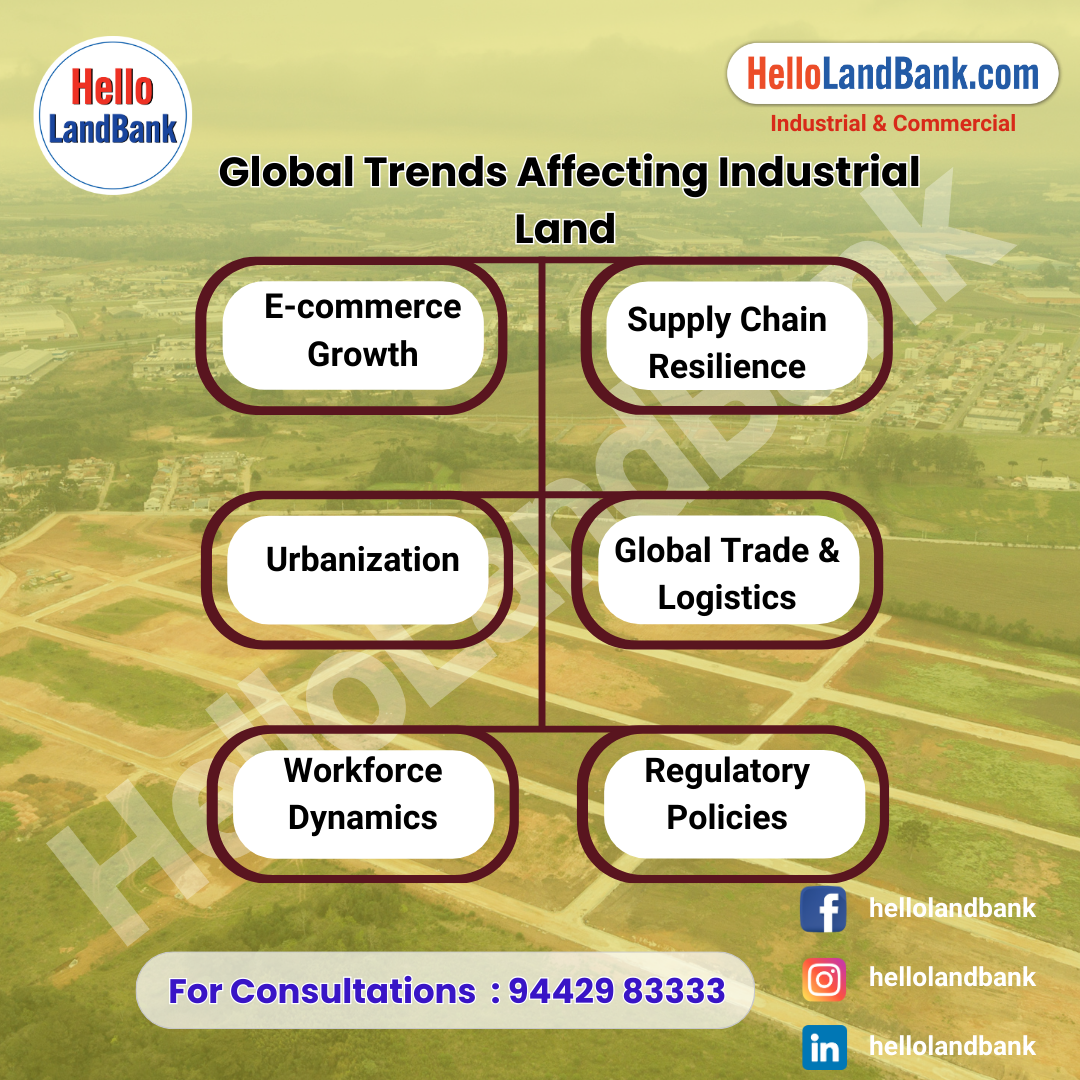Several global trends are shaping the industrial land sector, reflecting changes in consumer behavior, technological advancements, and economic shifts. Here are key global trends affecting industrial land:
1. E-commerce Growth:
- The continued growth of e-commerce is driving demand for industrial land, particularly for distribution centers, fulfillment centers, and last-mile logistics facilities. The rise of online shopping is reshaping supply chain dynamics and increasing the need for strategically located industrial properties to support efficient order fulfillment and delivery operations.
2. Supply Chain Resilience:
- Heightened focus on supply chain resilience and risk mitigation, spurred by disruptions such as the COVID-19 pandemic and geopolitical tensions, is influencing industrial land location decisions. Companies are seeking to diversify supply chains, enhance inventory management, and secure strategic warehouse locations to mitigate supply chain risks and ensure business continuity.
3. Urbanization and Infill Development:
- Urbanization trends and population growth in urban centers are driving demand for industrial land in densely populated areas. Infill development projects, adaptive reuse initiatives, and brownfield redevelopment are repurposing underutilized urban sites for industrial use, supporting efficient last-mile delivery and reducing transportation costs.
4. Technological Advancements:
- Technological advancements such as automation, robotics, artificial intelligence (AI), and Internet of Things (IoT) are transforming industrial operations and driving demand for modern industrial facilities. Industrial developers are incorporating advanced technology into warehouse design, construction, and operations to improve efficiency, productivity, and sustainability.
5. Sustainability Initiatives:
- Growing emphasis on sustainability and environmental stewardship is influencing industrial land development practices. Developers are incorporating green building features, renewable energy systems, and eco-friendly materials into industrial projects to minimize environmental impact, reduce carbon emissions, and achieve sustainability goals.
6. Global Trade and Logistics:
- Evolving trade patterns, shifts in global manufacturing, and changes in trade policies are impacting industrial land demand and location preferences. Growth in international trade, e-commerce exports, and cross-border logistics activities is driving demand for industrial properties near major ports, transportation hubs, and trade corridors.
7. Data Centers and Tech Infrastructure:
- Rising demand for data storage, cloud computing, and digital infrastructure is driving investment in data centers and technology-related industrial facilities. Industrial land near major data center clusters, connectivity hubs, and fiber optic networks is in high demand to support the expansion of digital infrastructure and technology ecosystems.
8. Workforce Dynamics:
- Changes in workforce dynamics, such as remote work trends, labor mobility, and talent migration, are influencing industrial land location decisions. Companies are prioritizing access to skilled labor, transportation networks, and urban amenities when selecting industrial sites to attract and retain talent.
9. Regulatory and Policy Changes:
- Regulatory changes, tax incentives, and government policies aimed at promoting industrial development and economic growth are impacting industrial land markets. Governments are implementing measures to stimulate industrial investment, support job creation, and attract foreign investment in industrial real estate.
10. Health and Safety Considerations:
- Heightened focus on health and safety considerations, driven by the COVID-19 pandemic, is influencing industrial land design, layout, and operational practices. Developers are incorporating features such as touchless technology, enhanced ventilation systems, and social distancing measures to create safer and healthier industrial environments for workers.
These global trends underscore the dynamic nature of the industrial land sector and the need for developers, investors, and policymakers to adapt to evolving market dynamics, technological innovations, and sustainability imperatives. By staying informed about global trends and market developments, stakeholders can capitalize on emerging opportunities and navigate challenges in the industrial real estate market.




